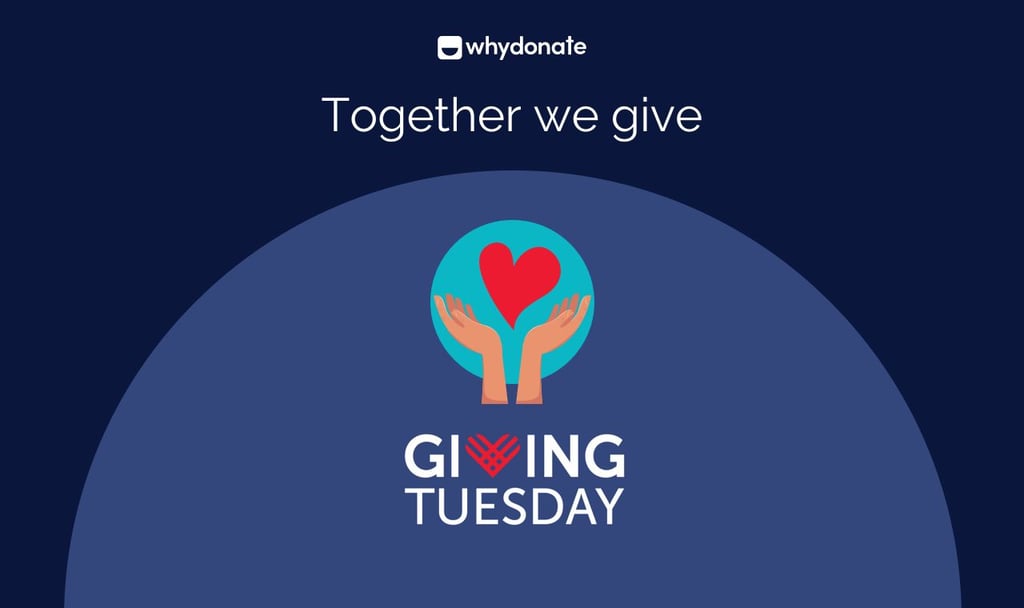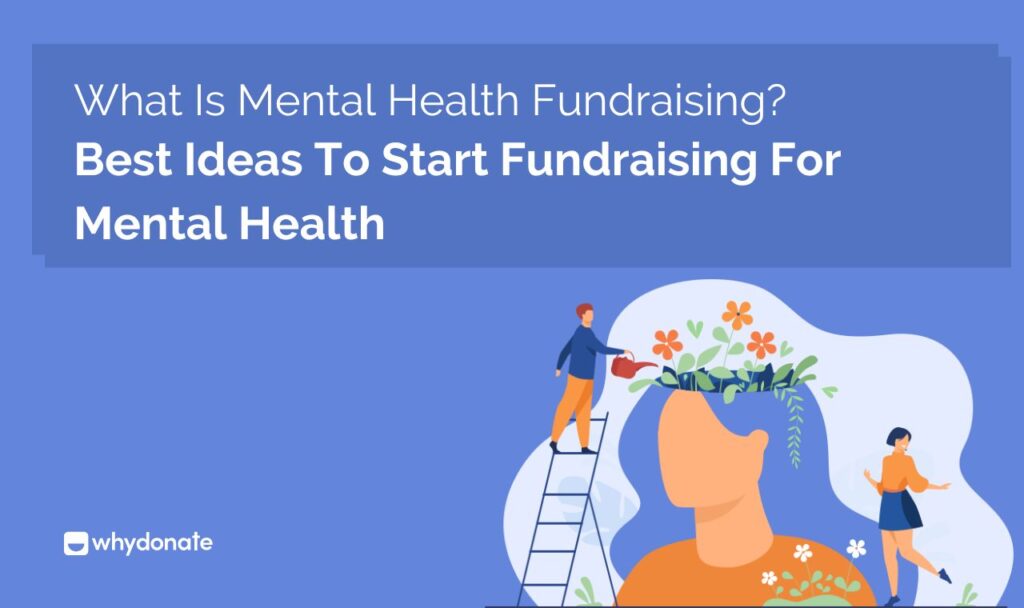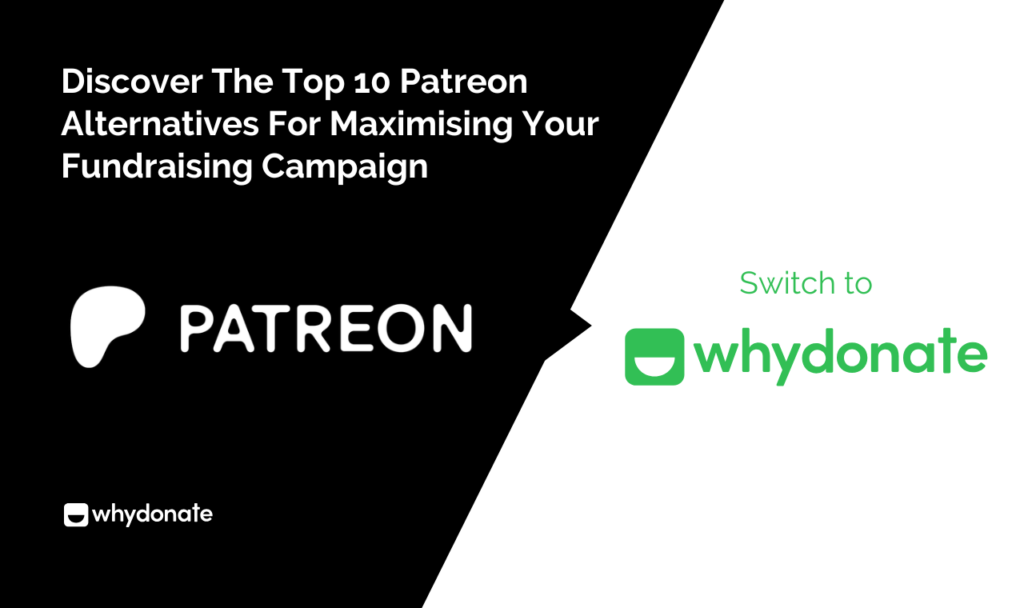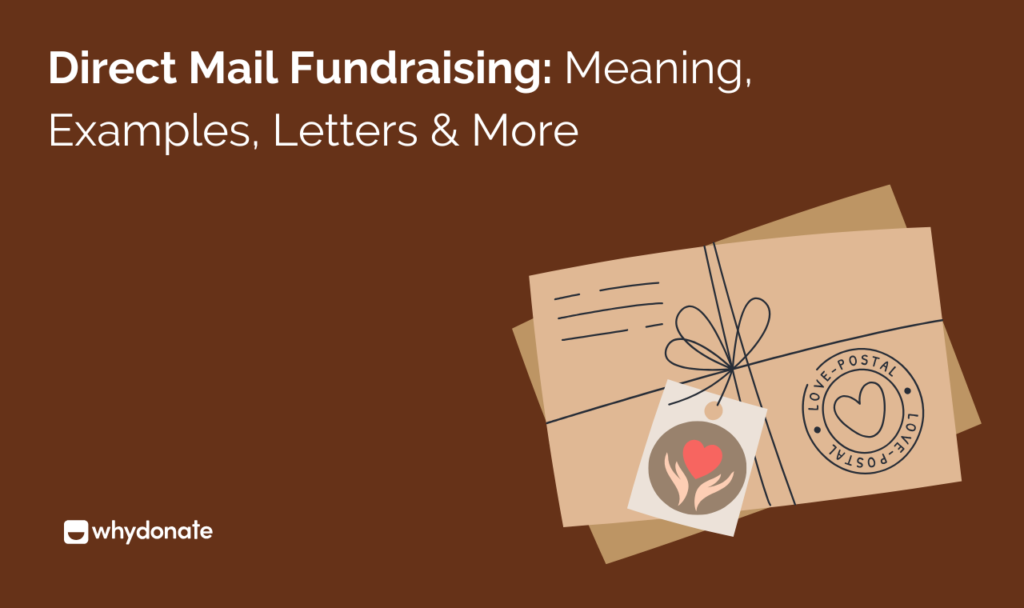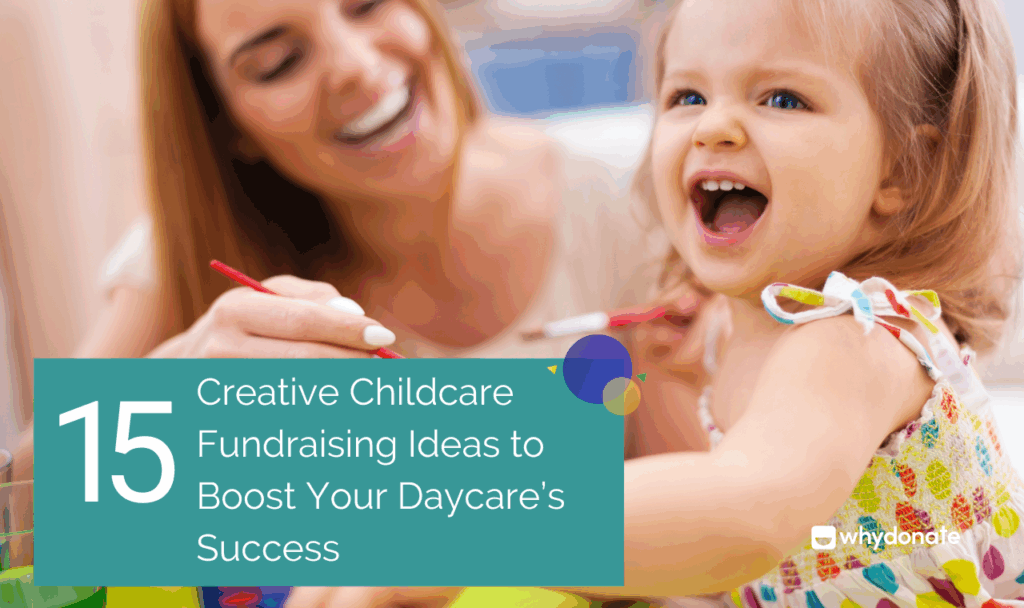The holiday season is upon us, and Giving Tuesday offers a unique occasion for non-profit organizations, charities, and people to gather and contribute to the cause. The Giving Tuesday holiday is a worldwide day of giving celebrated on the Tuesday after Thanksgiving across the United States.
This blog will look at the most innovative and effective Giving Tuesday ideas that will aid in raising funds and helping your cause. If you’re an experienced fundraiser or are just beginning with crowdfunding, these Giving Tuesday fundraising ideas will motivate you to impact your community. Let’s get started!
Table of Contents
What Is Giving Tuesday?
GivingTuesday has become a worldwide movement on the Tuesday following Thanksgiving, the fourth Thursday in November throughout the United States. It was created to respond to the soaring prices and heightened commercialization of the holiday season and was designed to inspire people to give to their communities and help charities.
Giving Tuesday was first introduced in 2012 but has developed into a global phenomenon, with millions participating across more than 70 countries. It’s a time for people to make donations to non-profit organizations, donate their time and talents, and raise awareness for issues that matter to their lives. Numerous corporations and businesses take part in Giving Tuesday by matching donations or through fundraising campaigns.
What Is Interesting About The Date Of Giving Tuesday?
GivingTuesday is observed on the Tuesday following the Thanksgiving holiday (in the US). The most well-known shopping days include Black Friday and Cyber Monday. The date of #GivingTuesday2024 falls on the 3rd of December of this year. It marks the beginning of the season of giving and is also the tradition of “giving month.”
According to the GivingTuesday Data Commons, around 35 million adults took part in various ways during Giving Tuesday 2021 within the U.S. It was an increase of 6% over the previous year.
GivingTuesday mostly makes use of the potential of social media as well as the charity of all people. The event encourages people to donate resources, time and talent to tackle urgent global and local issues. Many people are enthused by #GivingTuesday, and consider it a means to offset the excess of the holiday season. And what is better than the ability to give gifts during the holiday season?
Celebrate Giving Tuesday On 3 December 2024 This Year! Start A Fundraiser Now!

Is GivingTuesday Something For Me?
Various organizations, from local schools to large international charities, participate in #GivingTuesday. GivingTuesday is suitable for non-profit organizations if you are at least willing to invest time and have the necessary resources.
What Does The Fundraising Process Look Like?
Apart from the Giving Tuesday ideas, the fundraising process strongly depends on your non-profit: its size, the available resources (staff, time, money), and the priority that the campaign receives. Yet, there are several steps that your non-profit organization can follow to make this #GivingTuesday a real success.
1. Planning
If you haven’t started in August or September, this is the right time to start planning your GivingTuesday campaign.
- Determine a goal for your fundraising and use the SMART method for this.
- Think of your target group – who do you want to inspire to donate?
- Determine your campaign message – consider having only one message for the entire fundraising at the end of the year.
- Increase your resources – time, money, and staff.
- Think about what has worked for your non-profit so far – consider using it again.
- Map how you want to inspire your audience to donate.
- Make a timeline with activities, including deadlines, responsible employees, and a list of everyone who needs to be kept informed.
- Decide on internal communication methods – the joint action of the team and communication within the team’s organization are essential.
2. Preparation
“Success is where preparation and opportunities meet.”
Before you start the fundraising activities, the preparation must take up most of your time. Carefully assemble your call for fundraising – communicate what you want to achieve with this GivingTuesday and why it is essential.
- Start developing your fundraising site – this is where your campaign is hosted and how you receive the donations.
- Start developing your content – videos, flyers, blog posts (everything you’ve identified supports the strategy you’ve chosen during the planning).
- Identify community partners, corporate sponsors, and large donors who can promote and match donations.
3. Promotion
- Start promoting your best Giving Tuesday campaign ideas at least 2-3 weeks before #GivingTuesday.
- Email your supporters at least a week before GivingTuesday with an announcement of the campaign.
- Increase the frequency of emails around #GivingTuesday – send at least one email the day before and two emails on the day itself.
- Promote all your social media channels with the help of content and images you have already created for this purpose.
This is the basic process your non-profit organization can follow to conduct a fundraising campaign for GivingTuesday. If you are interested in more specific ideas for GivingTuesday, continue reading.

10 Amazing Giving Tuesday Ideas
If you’re confused about Giving Tuesday ideas, we have you covered. Here are the top 10 Giving Tuesday fundraising ideas that you can apply to have a successful fundraiser:
1. Provide An Online Fundraising Page
Maybe one of the essential items on the GivingTuesday task list is creating an online fundraising page to tick off because an online fundraising page is necessary for successful fundraising. This is especially true with GivingTuesday, mainly driven by social media and online donations.
Create a particular GivingTuesday 2024 fundraising/donation page. Ensure the page is responsive, loads quickly, well-designed, and clear above all. If a donation page is messy, difficult to navigate, overwhelming, or confusing, it lacks purpose: to increase donations. A donor must be able to find your donation link within a few seconds of loading your donation page. It is wise to place the link in the top navigation in the website’s header. Highlight this button/link by possibly using a bright and striking color.
Not every visitor who visits your website intends to donate. However, most visitors must be convinced. A short but convincing ‘why’ helps. Your donation page should not feel like just a payment processing form. If you choose to work on even one of these ideas for GivingTuesday, make sure you’re doing it right!
2. Show The Progress In Real Time
For Giving Tuesday campaign ideas with a relatively short duration, such as this, you must show your donors real-time progress. You can display a fundraising thermometer on your donation/fundraising page. Thanks to a visible thermometer with the progress of donations, your fundraisers will be more motivated to raise money, and your donors will be able to view the impact of their contributions in real time (significantly, as the thermometer automatically rises when donations arrive).
Displaying the progress bar works great because it shows the purpose and the progress. Also, seeing the thermometer rise through a donation gives a feeling of immediate satisfaction. Finally, a fundraising thermometer can be one of the most excellent Giving Tuesday fundraising ideas and build trust in your fundraiser.
3. Set Up A Peer-To-Peer Fundraising System
Peer-to-peer fundraising for GivingTuesday is an idea with a lot of potential for fundraising. Unfortunately, the best source of an organization, which is only sometimes fully used, is the current basis of donors and other supporters. Your current donors and supporters database can make the fact that you participate in #GivingTuesday known to their networks. They are also the most likely to donate on the big day.
Ask your supporters to create a personal fundraising page to gather their family, friends, and acquaintances and have them donate to your cause. Ensure you give your fundraisers a specific sense for fundraising – this will help motivate them. Finally, don’t leave them alone – after all, they do this for your purpose! Send them fundraising tips or train them if you have the resources. Follow them up, encourage them, help them get momentum, and take your excellent Giving Tuesday campaign ideas to the next level.

4. Use Price Anchoring
Anchoring tends to accept and trust the first piece of information received before deciding. That first piece of data is the anchor and sets the tone for everything that follows.
-
Some visitors were first asked an anchoring question: “Would you be willing to pay $ 5 …?” Some were asked “Would you be willing to pay $ 400 …?”
-
Those who did not get an anchor were willing to pay an average of $ 64.
-
When the anchor amount was $ 5, the average contribution was $ 20.
-
When the anchor was $ 400, the average contribution was $ 143.
This is why it is advised to request a specific amount based on the history of donating and the capacity of that person to do direct fundraising. Most of the top 100 non-profit organizations used an approach that included 4-5 proposed donations and the option to enter an adjusted amount. About half of these organizations emphasized a standard suggested amount (usually the 2nd or 3rd option).

5. Create And Foster Strong Partnerships
GivingTuesday is intended as a joint effort. Implement this idea of GivingTuesday and let go of the notion of competitiveness. GivingTuesday is not only about raising money for your purpose but also a time to get in touch with potential and current donors. Besides, it is an excellent opportunity to get in touch with companies, other non-profit organizations, and movements in your area or country.
This will help increase your visibility and reach. As a result, more donations will flow in, more individuals will promise to do voluntary work, and more people will be aware of your non-profit. The potential that lies here is enormous. Whether you collaborate with just one or two organizations (companies or non-profit organizations) or participate in a large-scale movement – partnerships are essential. Whatever you decide, make sure that you:
- Use the same media kit and hashtags for social media.
- Share each other’s campaigns online.
- Contact celebrities and social media influencers who care about your case and ask them to represent your cause.
- Contact the local and national media and ask them to donate this GivingTuesday media time to your business.
- Develop compelling images (images and videos) and share them.
- Retweet, share, mention – give your partners lots of love!
- Gain insight into the partnership conditions – better to set expectations and prevent potential problems.
- Donate to other organizations on GivingTuesday and set a good example!
6. Focus On The Impact
Donors are more focused than ever on impact. Ensure the donors in your GivingTuesday campaign know where their money is going. How can that make a difference? Be as specific as possible. View these two examples of fundraising:
“Please donate €10 to help prevent violence against women in Africa.” “With your €10 gift, one healthcare provider can respond to phone calls about domestic or sexual violence in Kenya for one day. Interventions aimed at empowerment help to prevent or reduce violence against women. “
Although both call for the same amount of money to create the same result, the second one has a much more apparent appeal. The second gives an action plan with a resulting result – the impact is visible.

7. Telling Stories And Video
GivingTuesday has grown enormously! Although it is quite possible to achieve your fundraising goals for GivingTuesday, that time of the year is also hectic. Fundraising calls constantly bombard people, and many organizations compete for their attention. In that noise, it is essential to stand out and find a way to conquer the donors’ hearts. An excellent Giving Tuesday idea is to tell stories.
Our brains are programmed to remember stories and find them attractive. Stories provide an emotional connection. To make good use of the power of storytelling, you can:
7.1. Make a video
Another amazing Giving Tuesday idea is curating catchy videos. Videos are an increasingly popular way to tell impact stories. The video shows how to raise more money in 2018 and increase your reach. Social video generates 1200% more shares than text and images combined.
Viewers remember 95% of a message when they view it in a video, and this is only 10% when they read it in a text. A video can display characters and situations in a way that a reader will never be able to and is much more dynamic than still images. See this video from World Vision as an example.
7.2. Create a positive message
Non-profit organizations sometimes resort to negative messages to evoke feelings of guilt. However, research shows that negative messages do not lead to donations. This does not mean you should not talk about difficult things; many non-profit organizations have to deal with unfavorable circumstances. It is about positively framing your story.
7.3. Choose 2-3 critical messages about your organization
Maybe you would like to add more for a complete communication plan, but 2-3 is sufficient for GivingTuesday. Think of your “why” and not your “what”.
7.4. Choose characters
People sympathize with people. Having recognizable characters is essential because they bring the problems that your organization addresses to a personal level. It can be difficult for ordinary people to relate to significant social issues such as poverty or hunger.
8. On Social Media – Go Loud Or Go Home
This idea for Giving Tuesday is a must. Giving Tuesday is strongly driven by shares and mentions on social media. Most fundraising is done online, and the movement depends on massive online campaigns and peer-to-peer fundraising.
Here are some things you can do to get the best out of social media:
- Use the digital nerds by mobilizing them to share #unselfies. A #unselfie is just a self-portrait where someone writes on a piece of paper about the case they are supporting with the hashtag #unselfie and then places a photo on social media.
- Brand your social media accounts. Provide your profile image with the #GivingTuesday logo. Also, align your cover photo with #GivingTuesday.
- Contact your platforms all day long to tweet again and share messages from your supporters about your campaign.
- Share your content (videos, images, blog posts) on social media.
- Name and thank those who shared your messages, especially those who donated during the day. Respond immediately to the comments you receive online.
- Go live on Instagram and Facebook and communicate with your donors or show what is happening behind the scenes at your office.
- Use Thunderclap and get creative with your messages.
- Your messages must contain a link to your campaign or donation page. This link must lead users directly to your donation page.

9. Promote A Monthly Donation Program
Another one of the best Giving Tuesday campaign examples is promoting a monthly donation program. This may seem like something other than an accurate idea for GivingTuesday, but #GivingTuesday is the perfect time to launch or promote your recurring or monthly donation program.
When a donor sets up a recurring donation, he chooses to donate a predetermined amount regularly. Many people like to donate monthly, bi-monthly, or annually, but they can donate as often as they want. A monthly donation is probably the most common form of periodic assistance.
Great monthly donation programs have a much higher return on investment than one-time donation programs. The average regular donor gives 42% more in one year than those who make one-off donations. Monthly donors also have a more considerable lifetime income per donor.
Finally, 52% of millennials more often give a monthly donation than one significant one-off gift. They prefer showing their support without a substantial financial commitment and donating a small amount to a cause they share that they will hardly feel in their wallets.
This Giving Tuesday idea is the most effective and easy way to keep the donors of Giving Tuesday out of the 24-hour buzz of social media.
10. Don’t Forget To Follow Up
Implementing all the unique Giving Tuesday ideas is excellent, but follow-up is crucial. After #GivingTuesday, forgetting the aftercare process for your donors/supporters can be easy. However, this step is essential for maintaining a good reputation and relationship with your donors and supporters. After GivingTuesday:
- You must write a blog post summarising the success of your GivingTuesday.
- You must place a thank you message everywhere on your social media the day after.
- You must email the donors to thank them for their donations.
- It would be best to ask super fans to become ambassadors for the following year.
- You should email those who have not donated and let them know you are extending the campaign for another week.
- You need to update #GivingTuesday on your website with a “Save the Date” for 2021 with an email opt-in.
In A Nutshell
As a day to give back, GivingTuesday is a great opportunity for non-profit organizations around the world to raise much-needed funds for their worthwhile goals. It is an excellent time to contact your donors, enter into partnerships, boost your finances, and try out new Giving Tuesday fundraising ideas without committing yourself to a whole year! Organize a physical event, find a business partner that matches the donations, or make a cartoon – whatever it is that lets your creative juices flow!
Don’t forget to visit # GivingTuesday.org, which is rich in resources, results from previous years, case studies, and more. Their toolkit contains Giving Tuesday ideas, logos, branding materials, videos, and more.
View WhyDonate if you want to use a reliable and efficient donation system that ensures you receive and manage your donations on GivingTuesday!
